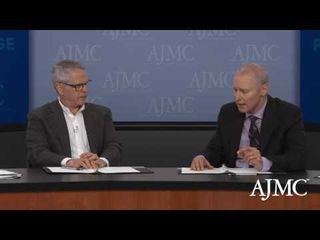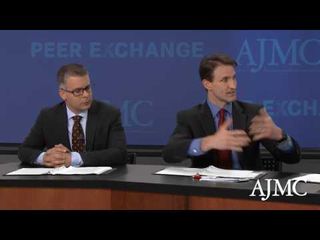
Technology
Latest News

Latest Videos

CME Content
More News

The authors of this study evaluated outcomes among children aged 7 to 16 years, all living with type 1 diabetes (T1D), who attended a 3-day virtual education camp that focused on their use of a closed-loop control (CLC) system for insulin delivery.

As artificial intelligence (AI) technology in the gastrointestinal field continues to advance, speakers at Digestive Disease Week 2022 discussed how these tools can be put into practice to improve efficiency, reduce physician burnout, and reap cost savings.

Miruna Sasu, PhD, MBA, president and CEO of COTA Healthcare, discusses the medicines discovery process and how real-world data can be used to evaluate patient and tumor response to treatment regimens.

A recent study found that limits on technology set by parents may play an important part in adolescent sleep.

Type 1 diabetes (T1D) can be especially difficult to manage in older adults, so this new multinational review compared the safety and effectiveness of a hybrid closed-loop (HCL) system and sensor-augmented pump (SAP) therapy.

Miruna Sasu, PhD, MBA, president and CEO of COTA Healthcare, delves into how real-world data and evidence generation have changed, both within the past year and since the beginning of the COVID-19 pandemic.

This new study among a patient population living with type 1 diabetes compared their outcomes according to their type of insulin pump therapy: sensor-augmented pump, predictive low-glucose suspend, and hybrid closed-loop (HCL).

In a session at the 2022 Asembia Specialty Pharmacy Summit, Jayne Hornung, chief clinical officer at Managed Markets Insights & Technology (MMIT), outlined factors driving payer hesitation when it comes to covering prescription digital therapeutics.

A new study incorporated use of readings from continuous glucose monitors (CGMs) to establish reference sensor glucose ranges among healthy nondiabetic children aged 1 to 6 years.

The February drop out of the top 5 coincided with a sharp decline in new cases of COVID-19, as reported by the CDC, following the January peak of the wave of cases related to the Omicron variant.

In this study, investigators from Pennsylvania and New York evaluated outcomes among patients following their hospitalization for heart failure (HF) who did or did not participate in a remote monitoring program that included financial incentives for adherence.

Using socioeconomic status (SES) as their primary exposure, investigators from McGill University, University of Manitoba, Institut National de Santé Publique du Québec, and Laval University investigated reasons behind insulin pump uptake disparities in the Canadian provinces of Manitoba and Québec.

The pandemic drove telehealth usage, but it has challenges that might prevent doctors from prescribing new therapies, said Doug Long, MBA, vice president, industry relations, IQVIA.

Patients with Parkinson disease (PD) were asked their opinions about which medical services they preferred to use via telehealth and which might be better suited to in-person care.

Continual nutrition modification is crucial in patients with moderate to advanced chronic kidney disease (CKD), and more interactive at-home solutions hold potential to improve nutritional nursing models after hospital discharge.

Predictive models can help find high-risk patients with asthma and manage them proactively, but prior models miss the highest-risk patients and may mislabel low-risk patients.

This new literature review explored the potential to enhance management for type 1 diabetes (T1D) through the adoption of physiological parameters measured by wearable and sensor-enabled health-related technology.

Delayed diagnosis of wild-type transthyretin amyloid cardiomyopathy (ATTR-CM) results in inappropriate treatments prior to diagnosis and worse clinical outcomes after diagnosis.

Rural hospitals find themselves targets of cyber attacks; a shortage of baby formula follows a nationwide recall; COVID-19 cases likely undercounted.

Investigators assessed different machine learning models to see which was best at distinguishing Parkinson disease from essential tremor.

Compared with other racial/ethnic groups, Black patients with type 1 diabetes (T1D) presented to medical centers with diabetic ketoacidosis (DKA) more often throughout the COVID-19 pandemic, regardless of COVID-19 infection.


Even as virtual care has dropped from the peaks at the beginning of the pandemic, some aspects of it will not go away in cardiology care, said Dipti Itchhaporia, MD, FACC, the 70th president of the American College of Cardiology.

Certain types of ophthalmic care were more successful with video visits based on what was required to treat patients, said Darren Chen, MD student at Weill Cornell Graduate School of Medical Sciences.

Value-based contracts are growing as drugs get more expensive and effective, but it’s still an emerging area with a lot of unknown and uncertainty.























































